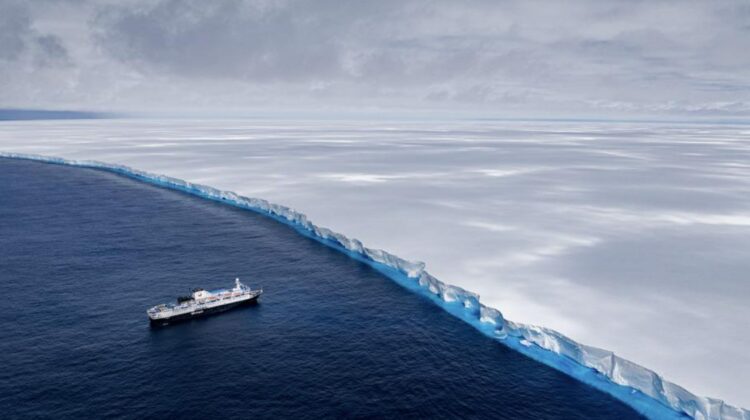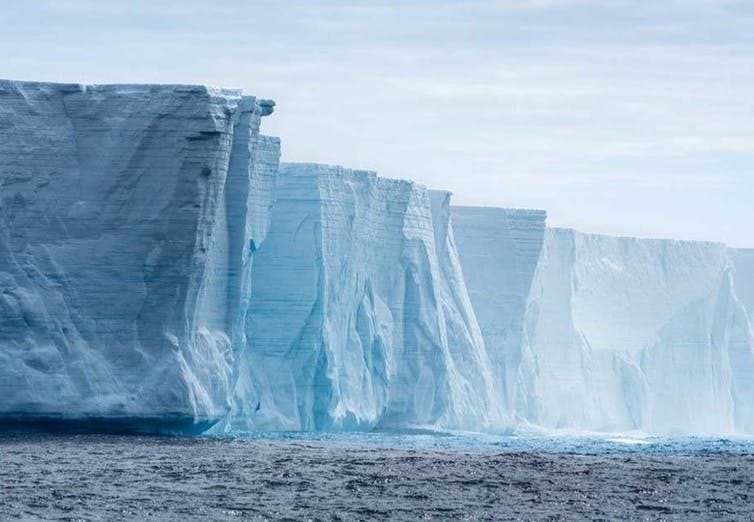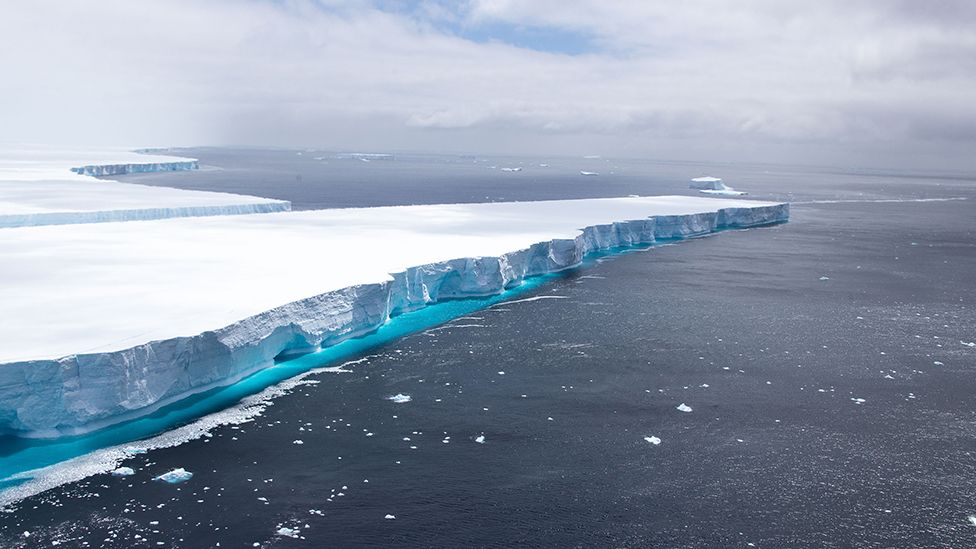
In a breathtaking encounter that has captured the world’s attention, a British research vessel has crossed paths with the largest iceberg on Earth. This monumental ice formation, known as A23a, has been drifting through Antarctic waters for decades, serving as a silent sentinel of the continent’s changing climate.
The Giant Awakens
A23a, a colossal ice mass three times the size of New York City, was initially calved from the Filchner Ice Shelf in 1986. For decades, it remained grounded in the Weddell Sea, a vast expanse of ocean off the coast of Antarctica. However, in recent years, the iceberg has begun to drift northward, propelled by ocean currents and melting from beneath its surface.

A Serendipitous Encounter
The British research ship, the RRS Sir David Attenborough, was fortunate enough to intercept A23a during its journey. This extraordinary encounter provided scientists with a rare opportunity to study the iceberg’s impact on the surrounding marine environment. Researchers collected seawater samples, measured the iceberg’s dimensions, and observed its behavior as it navigated the treacherous waters of the Southern Ocean.

Climate Change and the Antarctic
The encounter with A23a is a stark reminder of the profound changes taking place in the Antarctic region due to climate change. Rising global temperatures are causing glaciers to melt at an alarming rate, leading to the calving of larger and more frequent icebergs. These massive ice formations can have significant consequences for marine ecosystems, as they can disrupt ocean currents, alter nutrient cycles, and impact marine life.

The Future of the Antarctic
As climate change continues to accelerate, the fate of the Antarctic and its fragile ecosystems hangs in the balance. Scientists are closely monitoring the behavior of icebergs like A23a to better understand the implications of these events for the planet. By studying the impact of climate change on the Antarctic, researchers hope to develop strategies to mitigate its effects and protect this vital region for future generations.

The encounter between the British research ship and the world’s largest iceberg is a testament to the power and beauty of nature. It is also a sobering reminder of the challenges posed by climate change. By studying events like this and taking action to address the root causes of global warming, we can help ensure the survival of the Antarctic and its unique ecosystems for generations to come.

Leave a Reply